How Photographers Are Pioneering the New Normal
Photographers are adapting their businesses in the midst of coronavirus restrictions.
• August 2020 issue

What does it look like to own a photography business while practicing social distancing or complying with stay-at-home mandates? And when those mandates are lifted, what’s the new reality? We’re all in uncharted territory. Many photographers have been adapting and re-envisioning their business. In June, I asked five photographers to describe their experience as business owners during the COVID-19 pandemic.
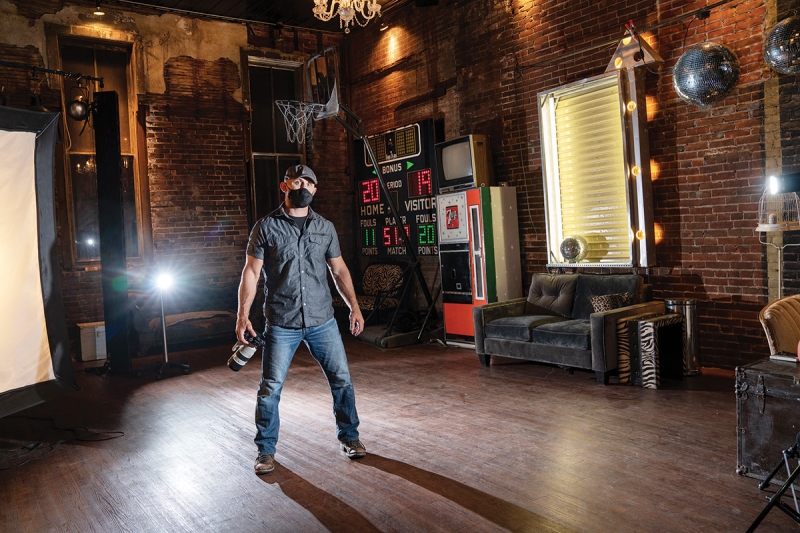
BEN SHIRK, M.Photog.M.Artist.Cr.
Shirk Photography, Wilton, Iowa
Ben Shirk has been in business for 14 years and specializes in photographing high school seniors and athletes. He is also the owner of GameChanger Templates.
How has business been impacted?
Shirk: We were not part of a mandated shutdown, but much of our work in the spring is with teams. Since all sports were cancelled, we didn’t have our typical clients. My clients usually leave the sales session with everything they can afford so I don’t have many reprints later.
My clients travel from around the country to our studio, so I typically do their portrait and sales session on the same day. We do nearly all pre-consultations over the phone. We send a series of magazine-like guides and questionnaires before our sessions to ensure clients are well prepared. Having all our information and studio policies clearly available helps make our sessions run smoothly and meet expectations. Our questionnaire helps us learn more about any ideas, fears, or confidences our clients may have. The form also ensures they have signed and agreed to all of our pricing and policies before the day of their session.
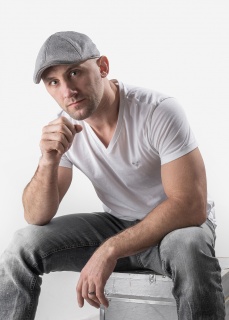
How will you adapt going forward?
Shirk: My studio policy of one session a week allows clients to feel very comfortable, not because of social distancing but because of how I set my business up. However, that gives the studio plenty of time to decontaminate. I have also ordered a no-touch thermometer for the studio.
I have been working on keeping my distance and using minimal props, even keeping my distance from the roller system so that I am nowhere a client typically goes. It’s hard, and I constantly have to remind myself to stay back when I want to help them reposition. I’m going without an assistant on my sessions to further cut down on any possible exposure.
Any encouragement for your peers?
Shirk: If you haven’t started back to work yet, now is the time to organize your client guides, website, take some online classes and better yourself so that you emerge from this a stronger, better photographer and businessperson.
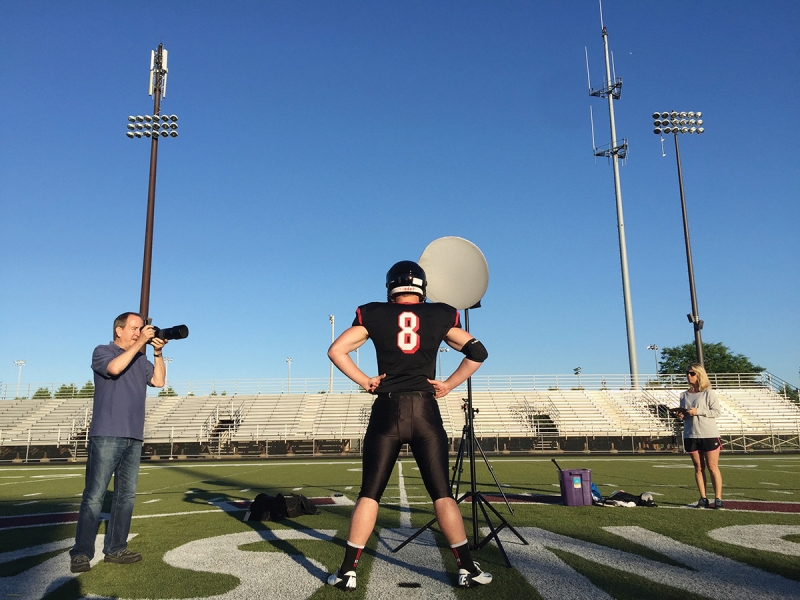
JOHN HARTMAN, M.Photog.M.Artist.Cr., CPP, A-ASP, EA-ASP
Contemporary Photography Inc., Stevens Point, Wisconsin
John Hartman has been in business for 46 years and specializes in portraiture, light painting, and commercial photography. His typical clients are high school seniors, families, people seeking headshots, commercial product companies, and automobile, motorcycle, and aircraft owners.
How has business been impacted?
Hartman: I’ve always been a believer in having multiple streams of income. Over the years I have created product lines that sell without requiring me to always be face to face with clients. This has served me well over the past few months. Our recent income has been supplemented by offering senior grad cards, which have sold well and don’t require client contact.
We started a Fine Art of the Week program, where one of my fine art pieces is on sale for one week only. We’ve sold many large metal prints online as a result, and the prints are drop shipped to the client for a touchless delivery.
I’ve partnered with our local Chamber of Commerce on a headshot promotion where businesses and individuals can buy portrait certificates at a discount to be used any time in the next year. We will be offering this same Buy It Now promotion to our high school seniors.
I also donate a portion of the sale to our local COVID-19 Relief Fund. This promotion has just started but already has resulted in dozens of sales, providing cash flow now in exchange for work to be done at the client’s convenience.
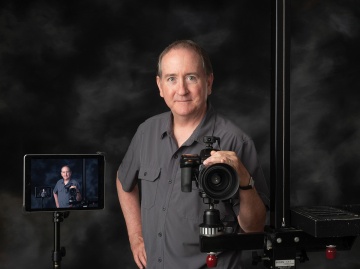
A few years ago, I began recognizing the value of old snapshots and began a product line of restoring damaged photos and designing wall arrangements of clients’ images from vacations, of family members, and important lifetime events. This has turned into a potentially limitless opportunity, and I’ve done a few of these jobs during the quarantine without the necessity of client contact.
Commercial photography is a growing part of our business, and I’ve been able to do several product shoots in my studio during the lockdown without client contact, transferring files via iPad to the client at their location immediately for review.
I’m also busy doing highly profitable light paintings, which are all done safely outdoors with virtually no client contact. And finally, I do have other income sources from teaching local classes, light painting workshops, and software products for photographers.
How will you adapt going forward?
Hartman: For some of our product lines I’ve been doing online and phone consultations and sales for a number of years, so the recent transition has been pretty seamless. When we get into our busy portrait season we will be offering virtual appointments as requested. The remote sales system I’ve developed has actually resulted in larger sales, so we’re ready for this new normal.
The pandemic has affected everyone, but those with businesses involving close people contact, including photographers, will be required to make changes in their standard operating procedures for the foreseeable future. As we begin to open up, the new norm will include physical distancing, the wearing of masks, the use of disinfectants, and other medically recommended steps to ensure the safety of both clients and workers. My age puts me in a risk category that makes these procedures even more important, so I will be following them closely.
We will be following all CDC guidelines and will only have one client in at a time, with cleaning and sanitizing between appointments. Ours isn’t a high-volume business, so these procedures will be fairly simple to implement. We will also provide full rescheduling options to assure clients they are not required to come if they or anyone in their household is not well.
Any encouragement for your peers?
Hartman: Owning my own studio for 46 years has provided me some perspective on the current situation. Yes, this pandemic has put many people (including photographers) in a tough and unfamiliar situation. But the survivors will be those who can stabilize their ship quickly, adapt to the changing circumstances, and innovate with new products and services that people will still want to own. I think it’s important to remember that even if there is, say, 30% unemployment, that means 70% are still working. No photography business is so large that it can’t find enough clients in that remaining 70% to earn a nice living. It’s not going to be easy and, most certainly, it’s not going to be the same. But I believe we will come out of this stronger and better able to navigate the new normal.
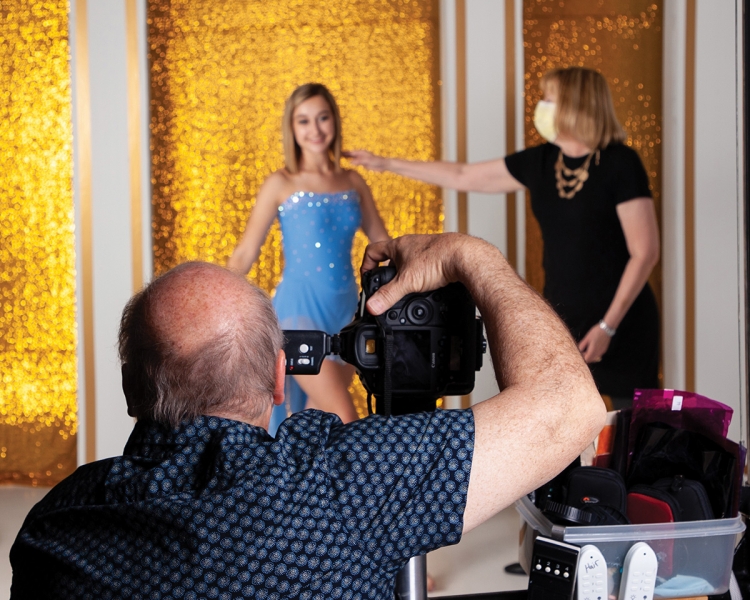
KEITH A. HOWE, M.Photog.M.Artist.MEI.Cr., and HOLLY HOWE, M.Photog.Cr.
Photographic Images, North Platte, Nebraska
Keith and Holly Howe have been in business for 40 years. Their photographic specialties are portraits, families, high school seniors, babies, and children. Because they live in a very small rural town, their typical client is not from any one demographic but rather people who value photography and recognize technical skill.
How has business been impacted?
The Howes: Our dance school rescheduled, and our annual children’s special was cancelled. But instead of focusing on the bad, we’ve been looking at what we can do. We marketed a reorder special for any images from 2018 and prior. Those orders could be handled via phone or email. We promoted gift certificates. Those two things brought in about $6,500. As our state began opening up a little, we offered quick-take sessions: one pose, pre-selected and pre-paid packages. We scheduled them 30 minutes apart to avoid people crossing paths and had 31 appointments booked within a week. There is no one answer. Even though each idea is small, together it adds up.
Since our big dance studio (500 dancers) cancelled its classes and recital, we had the dancers come to our studio on a staggered schedule. Our studio has front and side entrances and two separate doors into the camera room, so dancers came through the building in a one-way flow. No one crosses paths.
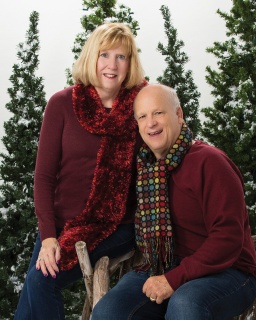
© Courtesy Photographic Images
How will you adapt going forward?
The Howes: Everyone is in the same situation. Our son is in sales, and his clients are high-level executives in multi-billion dollar companies. He said it’s very humanizing to be talking to someone at that level and hear their kids interrupting in the background. Instead of this being a detriment, we think it will forge more personal relationships. We think if you believe it’s a bad thing, it will be a bad thing. If you believe it’s going to have positive consequences, it will. When in-person sales are not possible, it will be even more important to use the phone and talk to your clients to develop those personal relationships. We have always tried to avoid text and email because you can’t pick up on inflections in their voice. We will do Zoom appointments where necessary but will continue to try for in-person.
As far as how sessions will change, we will be more careful with hand washing and probably wear masks when we can. Little children respond to facial expressions, so it will be important for them to see our faces. Most likely we will have clients adjust their own hair and clothing when possible. But we will see how it goes. We aren’t planning on making any changes to what props we use, just cleaning between sessions. We have always had a cleaning service once a week, but we will wipe down surfaces between sessions now.
We are established; we have a reputation. Our clients already have a level of trust. I might mention when scheduling something like, “Hey, let’s maybe go 30 minutes later so you don’t run into the people before you and we have time to wipe everything down.” It will just be as a part of a casual conversation. I will not take anyone’s temperature. If I want them to trust me, I have to trust them. If you have built a relationship with your clients, it’s just not an issue.
As far as cancellation or rescheduling, we’ve never had a policy. Things happen in life and plans change. If someone has to reschedule or cancel, we’re understanding of that.
Any encouragement for your peers?
The Howes: This is not the end of the world. In 2013, Keith had cancer. We had to shut down our studio for six months with no income whatsoever. By the time we got a diagnosis, we had already used up our savings on medical expenses, even with great insurance. We thought that was the end. Keith was given a less than 20% chance of survival. So even if we could survive financially, we didn’t know if he would make it. Yet here we are, seven years later, still full-time photographers. While I do not want to belittle anyone’s struggles, I know we will all be OK. We lived thru 9/11. It was the same kind of general unease and fear of what the future holds. Yet post-9/11, our family portrait business skyrocketed. When life is uncertain, people focus on what has meaning to them and is still an affordable investment. It makes sense that we will see an increase in family portrait sales later this summer and fall just like we did post-9/11.
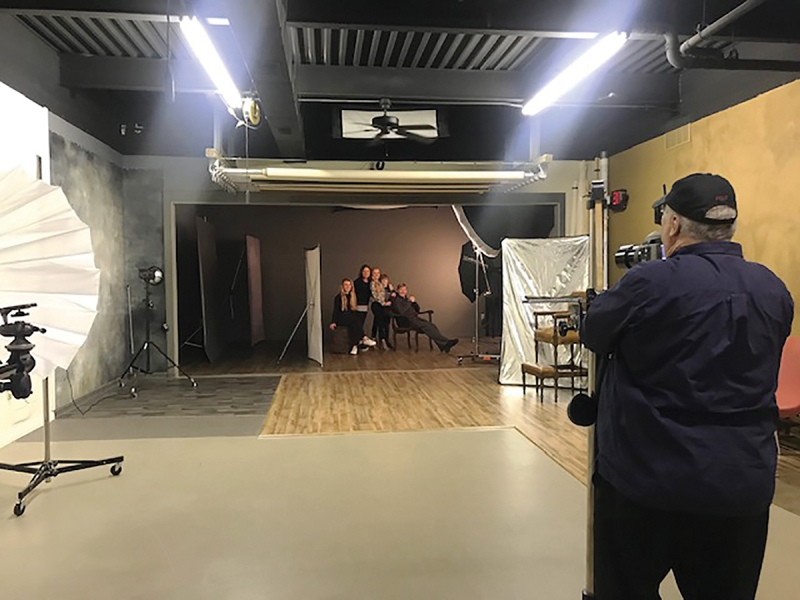
TIM WALDEN, M.Photog.Hon.M.Photog.Cr., CPP, F-ASP, and BEVERLY WALDEN, M.Photog.Cr.
Walden’s Photography, Lexington, Kentucky
Tim and Beverly took over Walden’s Photography from Tim’s father in 1980 and developed their trademark relationship style of black-and-white portraiture. They specialize in three portrait types: fine art relationship portraiture, color studies reflecting a Renaissance pallet, and mixed media interpretive Beau Visage paintings by Beverly.
How has business been impacted?
The Waldens: We were on mandated shut down from mid-March until reopening on May 19. During that time, we filled orders that were already placed and took a few new reprint orders. We developed processes to do more appointments virtually right now to be prepared if needed. We feel our design appointments can happen more easily online than the selection appointment. We are planning for the contingency of online selection appointments for those who may not feel comfortable coming in, but we will not offer that option unless it’s requested by the client. We had been working on this for our out-of-town clients to save them extra trips, so we were partially on the way. As far as preparing the client and going over pricing, we have created several electronic magazines that are both beautiful and informative. We are producing short videos encouraging clients to mimic the experience of being with us in person when we have to do an appointment virtually. The high-end experience should carry through everything, including all designed pieces.
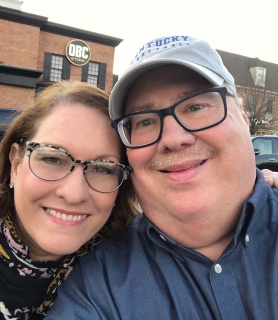
How will you adapt going forward?
The Waldens: During our shutdown, we sent several emails outlining our safety procedures. Our studio space is large, so we are emphasizing that we can social distance very easily. The use of props is not common in our studio, but any that are used can be sanitized easily. We are putting hand sanitizer and wipes on counters as a visual reminder that we are sanitizing all surfaces. We wipe every surface down before and after each client. We are removing all items from the dressing room with a note that the client can ask for any item they might need. We have purchased a touchless thermometer. Of course, any reschedules will be graciously handled. Finally, we added a Safety Measures page to our website with all of this information.
Our goal is to continue doing photography as we have always done it. Our facility layout lends itself to a touchless experience; however if someone is uncomfortable coming in, we will offer to accommodate their request. We expect to be able to direct our clients from the distance required.
People want to be seen and noticed after all this time quarantining. We believe a personal touch is very effective: We watch for events in our clients’ lives and comment on their Facebook posts. The more they see our name, the more comfortable we think they will feel when they reconnect with us.
People are slowly coming back and are talking to us about plans to come in, but it is not yet at the level it was before we closed. We continue to reach out to our clients through email marketing, and we make sure the message is soft and sensitive (usually by telling stories). We feel it will take time for clients to feel completely comfortable again, and we want to be the first thing on their minds when that happens.
We are busy planning for the future by creating new products, making short marketing videos, and reaching out to clients one by one. We are also shooting prototypes to fulfill our vision for a new color line, asking previous clients to come in and model for us.
Any encouragement for your peers?
The Waldens: There is no better time than now to message what is truly important, and that is keeping the heart in what we do. We are storytellers. We have great purpose as we create a legacy for our clients. Building relationships and trust with our clients is still the main focus as we continue to connect with them any way we can, whether through a handwritten note, a comment on Facebook, a text message, or an email. They need to know you care about them personally, now more than ever.
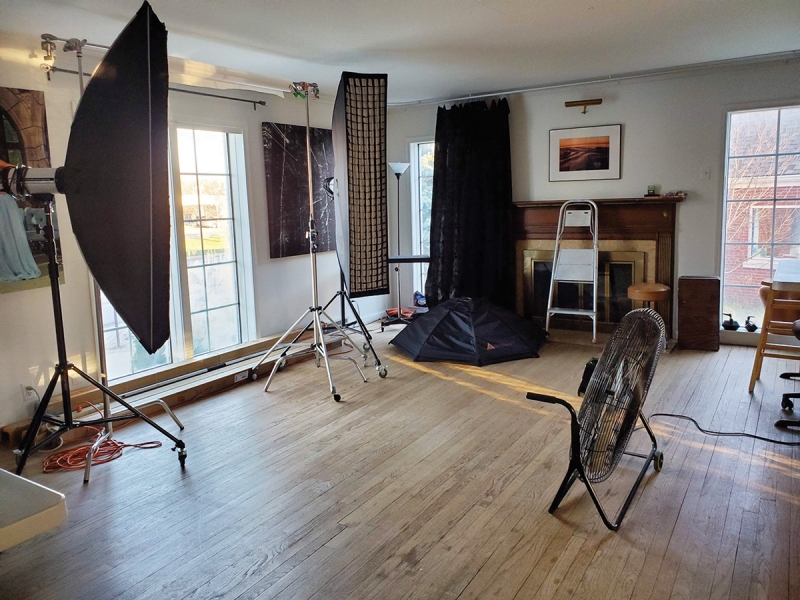
Rosh Sillars
White House Studios, Pleasant Ridge, Michigan
Rosh Sillars has been in business for 32 years and specializes in corporate portraits, food, and interiors. His typical clients are ad agencies, marketing companies, and web designers. He is also the owner of Rosh Media.
How has business been impacted?
Sillars: My commercial photography shut down during the crisis. However, I developed a communication plan and kept in touch with my clients. Michigan was under a stay-at-home order until June 12, and our landlord let us back into the studio building June 1. Things are gradually opening back up. Clients are beginning to reach out. I’ve spent a lot of time developing the next phase of my business. Fortunately, clients are beginning to book again.
We are taking advantage of Zoom for communication. It was not uncommon to work virtually before the shutdown; an art director often worked from their office. Now it will be standard for a while. My studio-mates and I are currently developing studio protocols. Every visitor will know how we are keeping the studio clean and safe, and our visitors will understand the rules and recommendations for visiting our studio. It’s all about communication.
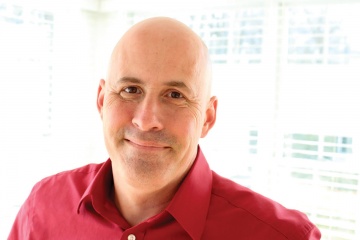
How will you adapt going forward?
Sillars: Apps such as Calendly (for scheduling) and Zoom (for meetings) are very helpful. I’ve been using PhotoShelter for years as an image delivery system. The key is to start a process and continue to refine it. The better you can communicate and give easy direction as to how the process works with prospects, the less resistance you will have from people not as familiar. Test everything you expect your clients and prospects to do while working with you. Make sure it’s easy and intuitive. If you believe they will figure it out, you’re making them work too hard.
We’ll continue to use props and materials. We will not take temperatures. Clients will have full instructions about our protocols and procedures. We will email them and place PDFs on our website. It’s important to communicate well and have serious processes but not make it seem like it’s too much trouble to work with us. We will have to be flexible until we fully understand clients’ new thresholds and expectations.
I will offer the same types of traditional photography, plus I will continue to expand with new combinations of video and augmented reality offerings.
Any encouragement for your peers?
Sillars: When the Great Recession hit Detroit, I thought the photography business was most likely over. However, I looked forward to new ways of doing business. At the time, social media was the new thing. The combination of my photography and social media took my career to new heights. There are two constants in photography: change and people complaining about the change. If you try to hold on to what was in the photography business, you may not be a photographer for much longer. There are more untapped opportunities for visual creators than ever before. Go find your new winning combination.
Betsy Finn is a portrait artist and owner of Betsy’s Photography in Dexter, Michigan.



